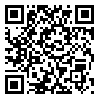BibTeX | RIS | EndNote | Medlars | ProCite | Reference Manager | RefWorks
Send citation to:
URL: http://ijn.iums.ac.ir/article-1-1021-en.html
2- PHD of Family counseling, Health promotion Research Center, Zahedan University of Medical Science and Health Services,Zahedan,Iran
3- MSC of Midwifery, Health promotion Research Center, Zahedan University of Medical Sciences and Health Services,Zahedan,Iran
Background & Aim: Recognition of strengths and weaknesses of evaluation content will help the educational manager to provide the possibility of evaluation quality improvement. The aim of this study was to determine the most important priorities of teacher performance evaluation from within students’ and faculties’ perspective.
Material & Methods: It was a descriptive cross- sectional study. All of the students (n=245) and faculty members (n=26) of the School of Nursing and Midwifery affiliated with Zahedan University of Medical Sciences were recruited during the academic year 2008-2009. Data was collected using questionnaire with five subscales including teaching skills, individual characteristics of teachers, communication skills, evaluation skills, and educational principles and rules and analyzed by SPSS-PC (v.13).
Results: The most important priorities from the teachers’ and students’ perspective were related to the domains of teaching skills, teacher mastery, creating motivation and students’ participation respectively. There were significant difference in the mean scores of teachers mastery (p=0.02), students’ participation (p=0.01), and presentation of new subjects (p= 0.007) between the two groups.
There was also significant difference in the mean scores of teaching skills domains, individual characteristics domain and evaluation skills domain between two groups (p=0.01).
Conclusion: considering the difference between the teachers’ and students’ perspective regarding some criteria of teachers evaluation, designing an evaluation tool according to the viewpoints of the two groups is recommended. Teachers’ attention to the students’ priorities in teachers’ evaluation would help to promote teaching quality and students’ satisfaction.
Received: 2012/01/23 | Accepted: 2014/08/25 | Published: 2014/08/25
| Rights and permissions | |
 |
This work is licensed under a Creative Commons Attribution-NonCommercial 4.0 International License. |




